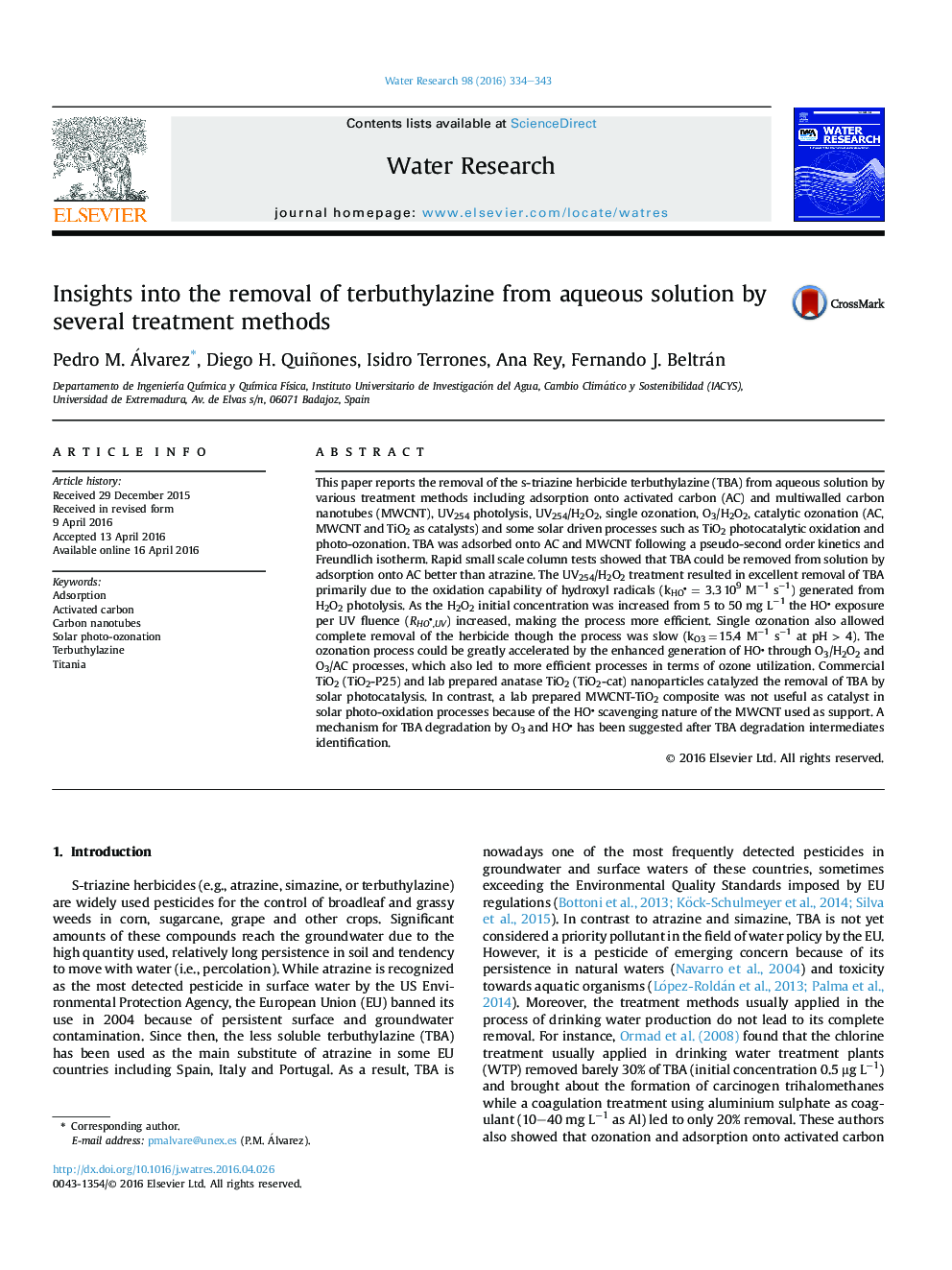| Article ID | Journal | Published Year | Pages | File Type |
|---|---|---|---|---|
| 4481000 | Water Research | 2016 | 10 Pages |
•Terbuthylazine (TBA) can be easily removed from water by adsorption onto activated carbon and MWCNTs.•TBA can be removed by UV radiation, the degradation rate and efficiency being greatly increased with the addition of H2O2.•AOPs such as O3/H2O2, O3/activated carbon, Solar/O3 and Solar/TiO2/O3 remove TBA efficiently.•Solar driven processes might be an inexpensive alternative to remove TBA from water in areas with high insolation.
This paper reports the removal of the s-triazine herbicide terbuthylazine (TBA) from aqueous solution by various treatment methods including adsorption onto activated carbon (AC) and multiwalled carbon nanotubes (MWCNT), UV254 photolysis, UV254/H2O2, single ozonation, O3/H2O2, catalytic ozonation (AC, MWCNT and TiO2 as catalysts) and some solar driven processes such as TiO2 photocatalytic oxidation and photo-ozonation. TBA was adsorbed onto AC and MWCNT following a pseudo-second order kinetics and Freundlich isotherm. Rapid small scale column tests showed that TBA could be removed from solution by adsorption onto AC better than atrazine. The UV254/H2O2 treatment resulted in excellent removal of TBA primarily due to the oxidation capability of hydroxyl radicals (kHO = 3.3 109 M−1 s−1) generated from H2O2 photolysis. As the H2O2 initial concentration was increased from 5 to 50 mg L−1 the HO exposure per UV fluence (RHO,UV) increased, making the process more efficient. Single ozonation also allowed complete removal of the herbicide though the process was slow (kO3 = 15.4 M−1 s−1 at pH > 4). The ozonation process could be greatly accelerated by the enhanced generation of HO through O3/H2O2 and O3/AC processes, which also led to more efficient processes in terms of ozone utilization. Commercial TiO2 (TiO2-P25) and lab prepared anatase TiO2 (TiO2-cat) nanoparticles catalyzed the removal of TBA by solar photocatalysis. In contrast, a lab prepared MWCNT-TiO2 composite was not useful as catalyst in solar photo-oxidation processes because of the HO scavenging nature of the MWCNT used as support. A mechanism for TBA degradation by O3 and HO has been suggested after TBA degradation intermediates identification.
Graphical abstractFigure optionsDownload full-size imageDownload high-quality image (251 K)Download as PowerPoint slide
